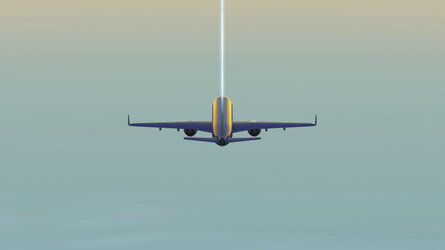Accept all cookies Accept only essential cookies See our Cookie Notice

About ESA
The European Space Agency (ESA) is Europe’s gateway to space. Its mission is to shape the development of Europe’s space capability and ensure that investment in space continues to deliver benefits to the citizens of Europe and the world.
Highlights
ESA - United space in Europe
This is ESA ESA facts Member States & Cooperating States Funding Director General Top management For Member State Delegations European vision European Space Policy ESA & EU Space Councils Responsibility & Sustainability Annual Report Calendar of meetings Corporate newsEstablishments & sites
ESA Headquarters ESA ESTEC ESA ESOC ESA ESRIN ESA EAC ESA ESAC Europe's Spaceport ESA ESEC ESA ECSAT Brussels Office Washington OfficeWorking with ESA
Business with ESA ESA Commercialisation Gateway Law at ESA Careers Cyber resilience at ESA IT at ESA Newsroom Partnerships Merchandising Licence Education Open Space Innovation Platform Integrity and Reporting Administrative Tribunal Health and SafetyMore about ESA
History ESA Historical Archives Exhibitions Publications Art & Culture ESA Merchandise Kids Diversity ESA Brand Centre ESA ChampionsLatest
Space in Member States
Find out more about space activities in our 23 Member States, and understand how ESA works together with their national agencies, institutions and organisations.
Science & Exploration
Exploring our Solar System and unlocking the secrets of the Universe
Go to topicAstronauts
Missions
Juice Euclid Webb Solar Orbiter BepiColombo Gaia ExoMars Cheops Exoplanet missions More missionsActivities
International Space Station Orion service module Gateway Concordia Caves & Pangaea BenefitsLatest
Space Safety
Protecting life and infrastructure on Earth and in orbit
Go to topicAsteroids
Asteroids and Planetary Defence Asteroid danger explained Flyeye telescope: asteroid detection Hera mission: asteroid deflection Near-Earth Object Coordination CentreSpace junk
About space debris Space debris by the numbers Space Environment Report In space refuelling, refurbishing and removingSafety from space
Clean Space ecodesign Zero Debris Technologies Space for Earth Supporting Sustainable DevelopmentLatest
Applications
Using space to benefit citizens and meet future challenges on Earth
Go to topicObserving the Earth
Observing the Earth Future EO Copernicus Meteorology Space for our climate Satellite missionsCommercialisation
ESA Commercialisation Gateway Open Space Innovation Platform Business Incubation ESA Space SolutionsLatest
Enabling & Support
Making space accessible and developing the technologies for the future
Go to topicBuilding missions
Space Engineering and Technology Test centre Laboratories Concurrent Design Facility Preparing for the future Shaping the Future Discovery and Preparation Advanced Concepts TeamSpace transportation
Space Transportation Ariane Vega Space Rider Future space transportation Boost! Europe's Spaceport Launches from Europe's Spaceport from 2012Latest

easyJet take off
Thank you for liking
You have already liked this page, you can only like it once!
The first commercial flights of a programme that uses Iris satellite technology to help modernise air traffic management and reduce carbon emissions have taken place.
The ground-breaking Iris programme, led by ESA and communications company Viasat, digitally connects pilots with air traffic controllers, via satellites, enabling the more efficient routing of flights. As well as saving time, it is predicted that, through reduced fuel burn, carbon dioxide emissions could be cut significantly. This will contribute to the aim of reaching net zero carbon emissions by 2050, which ESA aims to accelerate through working with partners to deliver tangible and measurable contributions.
Several airlines are in the pipeline to sign up to use Iris, and easyJet was the first airline to make an inaugural flight using the technology on its Amsterdam – Milan route. Iris will continue to be rolled out by easyJet, with more aircraft being equipped with the technology during 2024.
By using satellite communications, Iris provides secure, reliable and fast high-bandwidth links between pilots and air traffic controllers. This complements the current use of radio frequencies that are nearing full capacity in Europe’s congested airspace. The system supports more direct flight paths, leading to shorter flying times with less fuel burn and therefore generating lower emissions. Passengers will also benefit directly, with fewer delays.
Iris is also in the front line to put the Single European Skies initiative into action. Single European Skies aims to tackle the fragmentation of European airspace, with improvements in safety, capacity, cost-efficiency and environmental impact.
While easyJet is the first airline to use Iris for a commercial flight, other European airlines will also equip aircraft with Iris. For example, Italy’s national carrier ITA Airways has confirmed it would join the programme.
Iris is set for expansion beyond Europe. Called Iris Global, this next phase of the project will also see the system developed for potential use in remotely piloted aircraft systems. Operating beyond visual line of sight, such aircraft would gain a vital safety benefit from the extra layer of resilience that the Iris satellite communications provide.
-
CREDIT
easyJet -
LICENCE
ESA Standard Licence

MAVinci UAV in operation

Light aircraft used to test SkyLiberty device for fl…

SkyLiberty device aboard Diamond DA40 light aircraft

Some airlines already use satellite services















 Germany
Germany
 Austria
Austria
 Belgium
Belgium
 Denmark
Denmark
 Spain
Spain
 Estonia
Estonia
 Finland
Finland
 France
France
 Greece
Greece
 Hungary
Hungary
 Ireland
Ireland
 Italy
Italy
 Luxembourg
Luxembourg
 Norway
Norway
 The Netherlands
The Netherlands
 Poland
Poland
 Portugal
Portugal
 Czechia
Czechia
 Romania
Romania
 United Kingdom
United Kingdom
 Slovenia
Slovenia
 Sweden
Sweden
 Switzerland
Switzerland
























